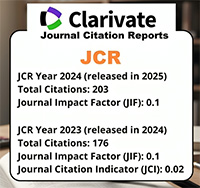Canine Transmigration: Seven Case Reports. / Transmigración de caninos: Presentación de siete casos clínicos.
Resumen
Abstract.
Dental transmigration is defined as the displacement of a tooth towards the opposite side of the arch with at least the crown having crossed the midline. This rare dental eruption anomaly (prevalence 0.1% to 0.41%) mainly affects the mandibular canines and its etiology is unclear. It is diagnosed by radiography, normally via a panoramic image. The available treatment options respond to the location of the affected tooth within the bone. They include periodic monitoring with radiographs, or, due to its complex nature, corrective measures involving an interdisciplinary team. Seven clinical cases are presented and the paper discussed how the patients’ treatments were influenced by different factors, such as position of the affected tooth, presence of other dental anomalies, and general oral cavity conditions.
Resumen.
La transmigración dental se define como el desplazamiento de un diente hacia el lado opuesto del arco con al menos la mitad de su corona cruzando la línea media. Es una anomalía dental de erupción poco frecuente (0,1% al 0,41% de prevalencia), que afecta principalmente a los caninos mandibulares y su etiología en ocasiones no es clara. El diagnóstico es radiográfico, por lo general a través de una ortopantomografía. Respecto a las opciones de tratamiento, estas suelen depender de la localización del diente afectado dentro del hueso. En algunas ocasiones se opta por mantener al paciente en observación y bajo controles radiográficos; en otras, cuando se decide corregirla, usualmente el tratamiento involucra un equipo interdisciplinario para su resolución debido a su complejidad. En este trabajo se presenta una serie de siete casos clínicos y se discute como influyeron factores como: la posición del diente afectado, la presencia de otras anomalías dentales y las condiciones generales de la cavidad oral, en la toma de decisión sobre la opción de tratamiento elegido por parte del paciente.
Descargas
Citas
Aktan AM, Kara S, Akgunlu F, Malkoc S. The incidence of canine transmigration and tooth impaction in a Turkish subpopula- tion. Eur J Orthod 2010; 32: 575-581.
Dalessandri D, Parrini S, Rubiano R, Ga- llone D, Migliorati M. Impacted and trans- migrant mandibular canines incidence, aetiology, and treatment: a systematic review. Eur J Orthod 2017; 39: 161-169.
Herrera-Atoche JR, Morales-Diaz SM, Co- lome-Ruiz GE, Escoffie-Ramirez M, Orella- na MF. Prevalence of dental anomalies in a Mexican population. Dent 3000 2014; 2: 1-5.
Mupparapu M. Patterns of intra-osseous transmigration and ectopic eruption of mandibular canines: review of literature and report of nine additional cases. Dento- maxillofac Radiol 2002; 31: 355-360.
Aydin U, Yilmaz HH, Yildirim D. Incidence of canine impaction and transmigration in a patient population. Dentomaxillofac Ra- diol 2004; 33: 164-169.
Gündüz K, Çelenk P. The incidence of im- pacted transmigrant canines: a retrospecti- ve study. Oral Radiol 2010; 26: 77-81.
Shapira Y, Kuftinec MM. Unusual intraos- seous transmigration of a palatally impac- ted canine. Am J Orthod Dentofacial Or- thop 2005; 127: 360-363.
Camilleri S. Double transmigration and hy- perdontia. Angle Orthod 2007; 77: 742-744.
Peck S. On the phenomenon of intraos- seous migration of nonerupting teeth. Am J Orthod Dentofacial Orthop 1998; 113: 515-517.
Taguchi Y, Kurol J, Kobayashi H, Noda T. Eruption disturbances of mandibular per- manent canines in Japanese children. Int J Paediatr Dent 2001; 11: 98-102.
Tarsariya VM, Jayam C, Parmar YS, Band- lapalli A. Unusual intrabony transmigra- tion of mandibular canine: case series (re- port of 4 cases). BMJ Case Rep 2015. doi: 10.1136/bcr-2014-205398.
Bhullar MK, Aggarwal I, Verma R, Uppal AS. Mandibular canine transmigration: re- port of three cases and literature review. J Int Soc Prev Community Dent 2017; 7: 8-14.
Umashree N, Kumar A, Nagaraj T. Trans- migration of mandibular canines. Case Rep Dent 2013. doi: 10.1155/2013/697671.
Varela M, Arrieta P, Ventureira C. Non-syn- dromic concomitant hypodontia and super- numerary teeth in an orthodontic popula- tion. Eur J Orthod 2009; 31: 632-637.
Aktan AM, Kara S, Akgunlu F, Isman E, Malkoc S. Unusual cases of the transmigra- ted mandibular canines: report of 4 cases. Eur J Dent 2008; 2: 122-126.
Pico CL, do Vale FJ, Caramelo FJ, Corte- Real A, Pereira SM. Comparative analysis of impacted upper canines: panoramic ra- diograph vs cone beam computed tomogra- phy. J Clin Exp Dent 2017; 9: e1176-1182.
Eslami E, Barkhordar H, Abramovitch K, Kim J, Masoud MI. Cone-beam computed tomography vs conventional radiography in visualization of maxillary impacted-canine localization: A systematic review of com- parative studies. Am J Orthod Dentofacial Orthop 2017; 151: 248-258.
Bertl MH, Frey C, Bertl K, Giannis K, Gahleitner A, Strbac GD. Impacted and transmigrated mandibular canines: an analysis of 3D radiographic imaging data. Clin Oral Investig. 2018; 22: 2389-2399.
Aras MH, Buyukkurt MC, Yolcu U, Ertas U, Dayi E. Transmigrant maxillary canines. Oral Surg Oral Med Oral Pathol Oral Radiol Endod 2008; 105: e48-52.
Baccetti T. A controlled study of associated dental anomalies. Angle Orthod 1998; 68: 267-274.





















